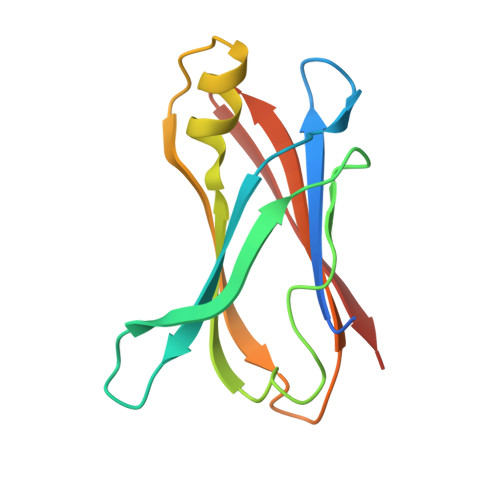Iodination of salicylic acid improves its binding to transthyretin
Gales, L., Almeida, M.R., Arsequell, G., Valencia, G., Saraiva, M.J., Damas, A.M.(2008) Biochim Biophys Acta 1784: 512-517
- PubMed: 18155178
- DOI: https://doi.org/10.1016/j.bbapap.2007.11.014
- Primary Citation of Related Structures:
3B56 - PubMed Abstract:
Transthyretin (TTR) is a plasma homotetrameric protein associated with senile systemic amyloidosis and familial amyloidotic polyneuropathy. In theses cases, TTR dissociation and misfolding induces the formation of amyloidogenic intermediates that assemble into toxic oligomeric species and lead to the formation of fibrils present in amyloid deposits. The four TTR monomers associate around a central hydrophobic channel where two thyroxine molecules can bind simultaneously. In each thyroxine binding site there are three pairs of symmetry related halogen binding pockets which can accommodate the four iodine substituents of thyroxine. A number of structurally diverse small molecules that bind to the TTR channel increasing the protein stability and thereafter inhibiting amyloid fibrillogenesis have been tested. In order to take advantage of the high propensity to interactions between iodine substituents and the TTR channel we have identified two iodinated derivatives of salicylic acid, 5-iodosalicylic acid and 3,5-diiodosalicylic acid, available commercially. We report in this paper the relative binding affinities of salicylic acid and the two iodinated derivatives and the crystal structure of TTR complexed with 3,5-diiodosalicylic acid, to elucidate the higher binding affinity of this compound towards TTR.
Organizational Affiliation:
ICBAS - Instituto de Ci¨ºncias Biom¨¦dicas Abel Salazar, Largo Prof. Abel Salazar, 2, 4099-003 Porto, Portugal.

















